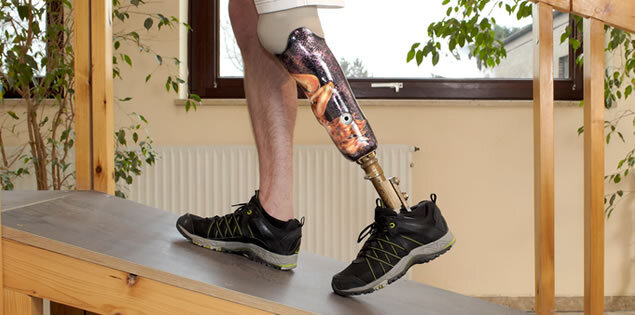Let us review proper care of our liners and sleeves, so that you can have a happy and healthy wound free summer!
Prosthesis care—socket & textile components
Let’s start with your socket. Thanks to the innovation of prosthetic liners, the sensitive skin of your residual limb is unlikely to ever come in contact with your prosthetic socket. However, it is still very important to clean your socket at least once a week.
If your residual limb does sit directly within the socket without a liner interface, such as if you are using vacuum suction, you should clean your socket daily to maintain optimal limb health.
1. Clean your prosthetic socket with water and pH neutral soap and then leave it to dry.
2. Disinfect the socket with an alcohol spray.
Other textile components of your prosthesis should be washed at least 2-3 times a week as long as the manufacturer's specifications of your products do not contradict this. You can find out the manufacturer's specifications of your products from your prosthetist. You can also machine wash your liner in warm or hot water (104 degrees F). Make sure you place it in a laundry bag when using your washing machine. Use a mild detergent and choose the most gentle cycle your machine offers.
Skincare, Liners and Sleeves
Residual limb care.
By wearing a prosthesis, the natural properties and functions of the skin are disturbed at the sites stressed by the prosthetic restoration. Additionally, the pressure and friction exerted on the skin by sockets and liners affects the skin‘s ability to regulate temperature. The combination of increased perspiration and stress on skin eventually leads to irritation and bacteria formation. It is important that you cleanse and care for the skin on your residual limb daily.
1. Clean your residual limb daily with a mild soap (pH neutral) or a special cleansing lotion (for example, Iceross Clean & Simple cleansing lotion by Össur, I use this as my liners are from this company.) Ask your prosthetist, which one would be best for your liners and sleeves.
2. Apply a moisturizing cream (for example, Iceross Clean & Simple Moisturizing Lotion from Össur, I use this as my liners are from this company.) Ask your prosthetist which one would be best for your liners and sleeves to prevent the residual limb from drying out and to promote the regeneration of the skin. To avoid excessive perspiration in the liner, you should use the cream in the evening, preferably at bedtime.
Liner care.
The liner wraps around your sensitive residual limb and comes in direct contact with bacteria. Therefore, you should clean the liner after each wear or daily, by hand, and at least once a week in the washing machine.
For handwashing liners.
1. Roll the liner off of your residual limb.
2. Turn the liner inside-out so that the silicone that is typically on the inside is outside.
3. Thoroughly wash the silicone side with a mild (pH neutral) soap or with a special liner cleaner (Ex: Iceross Clean & Simple Purifying Lotion by Össur. Most companies have a recommended cleaning agent to use. I use this as my liners are from this company Ask your prosthetist which one is best for you.
4. Rinse off the soap entirely so there is no residue.
5. Dry the liner inside and out with a towel.
6. Turn the liner back to its normal form so the silicone is on the inside and clean the outside with a damp cloth.
7. Hang up the liner to dry completely. Never put it on directly on a heater and avoid direct sunlight.
For machine washing liners.
1. Place the liner in a laundry bag.
2. If the manufacturer's specifications of your products allow, machine-wash your liner in warm or hot (104 degrees F) water.
3. Use a mild detergent and choose the gentlest cycle your machine offers.
4. Dry the liner inside and out with a towel.
5. Turn the liner back to its normal form so the silicone is on the inside and clean the outside with a damp cloth.
6. Hang up the liner to dry completely. Never put it on directly on a heater and avoid direct sunlight.
Tip: having a second liner allows you to change the liner daily, making daily cleaning much easier and allowing for adequate drying time. If you do not currently have a backup liner, ask your prosthetist for advice.
I hope these tips help as the summer temperatures rise! As always, talk to your prosthetist and physician as they can give you the best advice first! Have a beautiful and blessed summer.
These tips are informed suggestions. If you do not feel comfortable with them, please do not attempt them. Instead as always contact your medical professional or your prosthetist for help and advice.
If you have a question for me about living as an amputee, ask! And if I don’t know the answer, I will find it for you, and I will leave no stone unturned to help you find your own personal new normal. If there is a topic you would like me to feature please let me know! I want us all to grow strong together. Email me at Dawn@dankmeyer.com. This email is not secure, so if you wish to keep any specific health information private, you should call us!
Dawn Miranda joined Dankmeyer, Inc. almost two years ago as a Prosthetist Assistant after relocating from San Antonio, TX. To read more about Dawn on our Clinical Staff page, click here.





























































































































